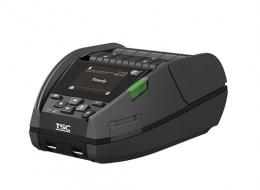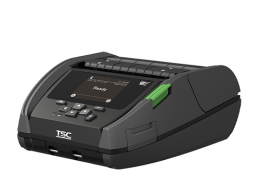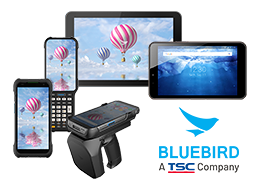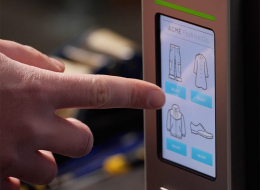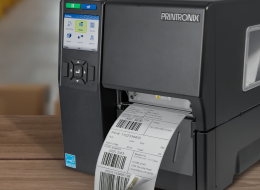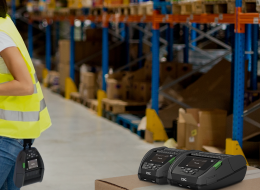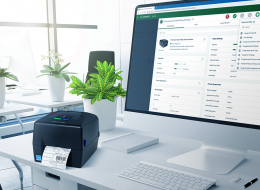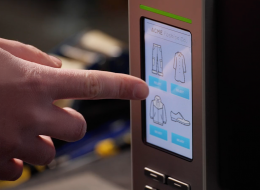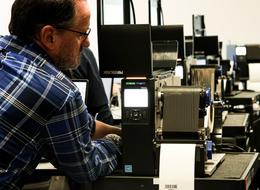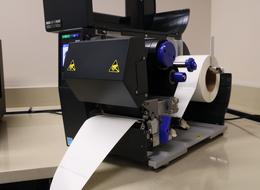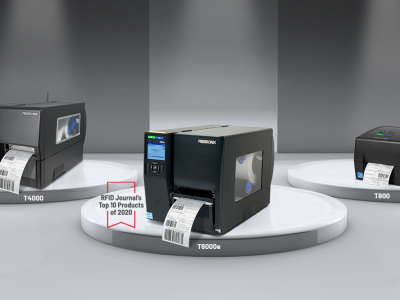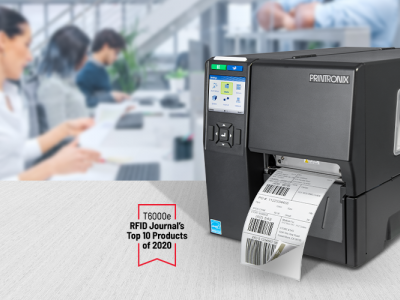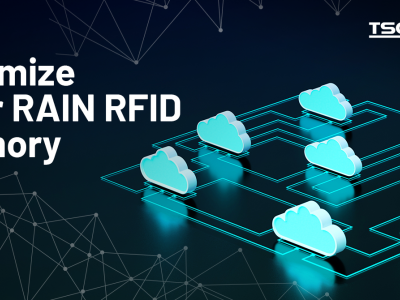How Suppliers and Barcode Professionals can Leverage Opportunities with Exception Tagging for Walmart’s RFID Initiative

If you work with Walmart, you’ve likely heard about their initiative requiring all items arrive at Walmart stores with RFID smart labels by September of 2022. As a Walmart supplier or barcode professional, how do you navigate the recent RFID initiative? How can you help your existing customers and possibly gain new customers in the process?
The retailer stated in a Forbes article that “Over the last year, we have successfully implemented RFID technology in our Apparel departments and have seen dramatic results. We have improved On Hand Accuracy, which has grown Online Order Fulfillment. These dramatic improvements have had major impacts on Sell Through and customer satisfaction. With the success of this initiative, Walmart plans to continue expanding this program to other departments and categories.”
While this change can be overwhelming, it also presents an opportunity for suppliers and barcode resellers. In today’s blog post, we will introduce the key concept of RFID “exception tagging” to help you enhance compliance with Walmart’s RFID initiative and leverage opportunities.
Walmart RFID Initiative Presents Opportunities for Barcode Resellers
Exception tagging is the act of RFID tagging individual items that should already be tagged, but are not. These items are exceptions to the rule and therefore need to be tagged as soon as possible.
The first thing to keep in mind is that most products supplied to Walmart are manufactured in Asia. As such, it is now common that these products will be tagged directly following the manufacturing process, so-called “source tagging.” If the products arrive to the U.S. already tagged then, in theory, nothing further needs to be done at the receiving end. But the reality is much different. Reality provides barcode resellers with a great opportunity to better serve their customers.
The first opportunity is for exception tagging. Some items arriving from abroad will not be properly tagged or will have missing or damaged tags. Imagine a shipment of 1,000 pairs of blue jeans and these jeans should have all been source-tagged by the overseas manufacturer. It is very common, however, that a few pairs will have missing or damaged tags. These few pairs are the “exception,” and they now need to be tagged before final dispatch to Walmart. The final supplier to Walmart carries the responsibility to make this happen. The most common solution to exception tagging is to set up a workstation with an RFID printer and print/encode the tags locally.
RFID Label/Tag, Printer Specs, and Serial Number Details
As is often the case with RFID, the devil is in the details. Which precise labels are allowed? What RFID printer specifications are needed? Where does the tag get affixed to the item? And perhaps most importantly, how are the serial numbers managed?
To determine allowable RFID labels, you must first determine which Walmart department the goods are sold in. For example, if the products are sold in Walmart department “D22, Bedding,” then you would consult this table:
| Department | Subcategory | Inlay Spec | Approved Inlay List |
|---|---|---|---|
| D22- Bedding | Hang tag | W4 | https://rfidarc.auburn.edu/temp/inlays/spec-w1.php |
| D22- Bedding | Bedding Sets, Sheet Set | W4 | https://rfidarc.auburn.edu/temp/inlays/spec-w1.php |
| D22- Bedding | Mattress Topper, Mattress/Pillow Protector, Pillowcase – Polybag | W4 | https://rfidarc.auburn.edu/temp/inlays/spec-w1.php |
| D22- Bedding | Mattress Pad | W4 | https://rfidarc.auburn.edu/temp/inlays/spec-w1.php |
| D22- Bedding | Blankets, Mattress Topper, Mattress/Pillow Protector – Boxed | W4 | https://rfidarc.auburn.edu/temp/inlays/spec-w1.php |
| D22- Bedding | Airbeds | W4 | https://rfidarc.auburn.edu/temp/inlays/spec-w1.php |
| D22- Bedding | Boxed Pillows | W4 | https://rfidarc.auburn.edu/temp/inlays/spec-w1.php |
Table 1 – D22-Bedding
In this table you can see which Auburn ARC Program inlays are allowable. Using an example, let’s say that you supply airbeds to department D22. The allowable inlays would be found at https://rfidarc.auburn.edu/temp/inlays/spec-w1.php.
With your inlay choices clarified, you now need to ensure that the finalized label construction and placement on the item are acceptable. In the case of exception tagging this is quite simple, as you only need to reproduce the label construction and placement that are in use already. The tag construction, placement, and packaging would have been already approved by Auburn’s ALEC program for the original source tagging.
For the RFID printer, fortunately the encoding required by Walmart is fairly simple and straightforward. The encoding for all products, regardless of department or type, is GS1’s “SGTIN-96.” SGTIN stands for Serialized Global Trade Identification Number. Simplified, this is the long-used UPC number plus a serial number. All RFID printers on the market can generate this encoding scheme.
There are only two “curveballs” to keep in mind at this point:
- As per Walmart specs, the RFID labels must be printed with 300 dpi or higher resolution. Very few people are aware of this, but it is a requirement. Make sure your customers comply by using a 300 dpi or higher resolution printer.
- The serial numbers to use. This gets tricky and leads us to the general issue of “serial number management” and the second opportunity for barcode resellers to assist their customers.
When exception tags (labels) are generated, they must be encoded with a unique serial number. In theory, the one pair of jeans with a missing tag already has a unique serial number associated with the pants. This means that the exception tagging process should be integrated with the original serial number database in order to retrieve the correct serial number to be encoded. This can be done, but it requires sophisticated system integration. Which exact pair of jeans with which exact serial number are you holding that requires a tag?
An alternative approach is to generate a completely new and unique serial number that has not and will never be used at the source tagging level. Normally a range of serial numbers gets allocated in advance and reserved for just such exception tagging purposes. When one of these serial numbers gets used, it must now be integrated into the supplier’s host system and associated with this pair of jeans. But we must also keep in mind that an original serial number for that pair of jeans is still “floating around out there.” We must therefore eventually flag the missing serial number and associate it with the new serial number.
Yes, serial number management is complex, but it is your opportunity as a value-added reseller to help your customers comply with the new requirements.
RFID Expertise
As a leader in the RFID space, we routinely post articles like these to help you better understand and deploy RFID solutions. To view our lineup of RFID printers, visit this link. To get started with RFID solutions, contact your local TSC Printronix Auto ID sales representative.

